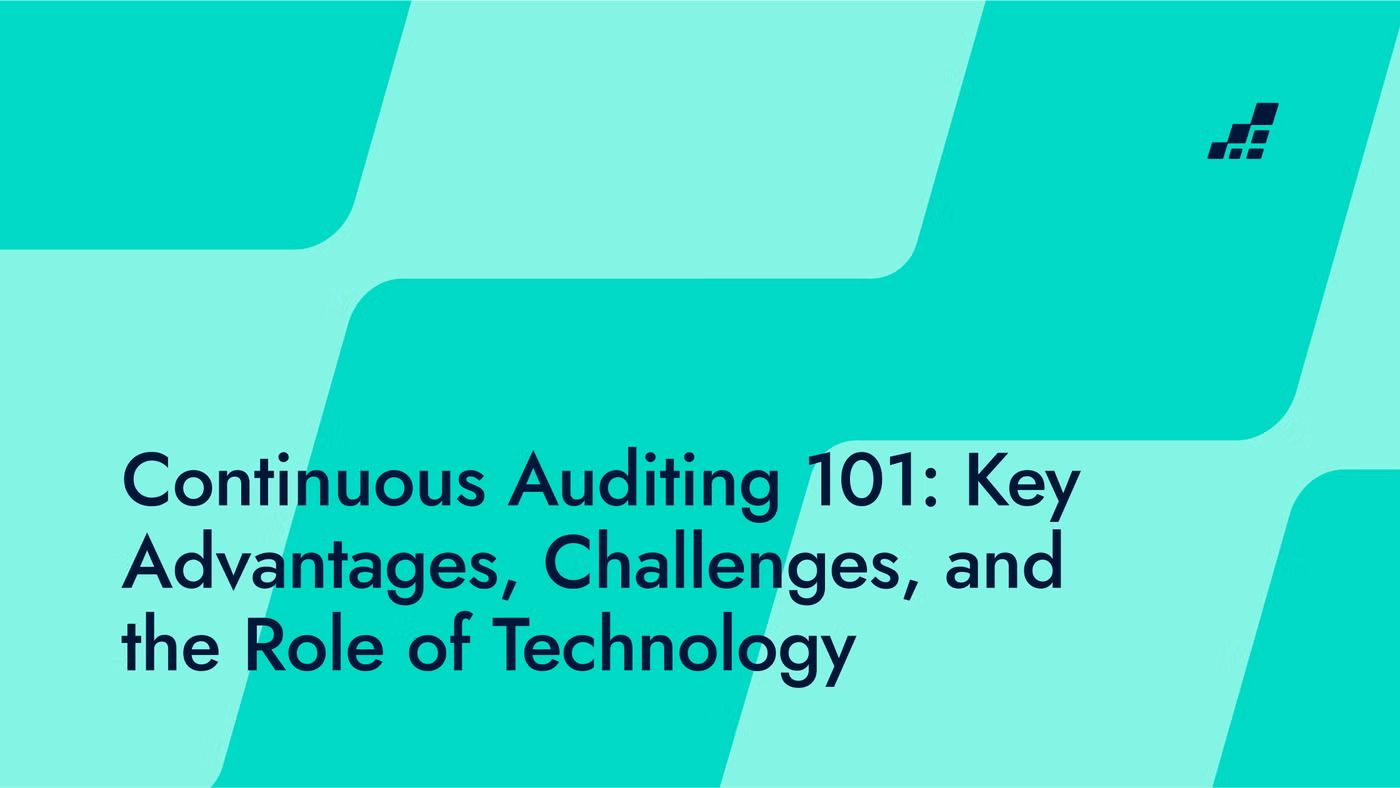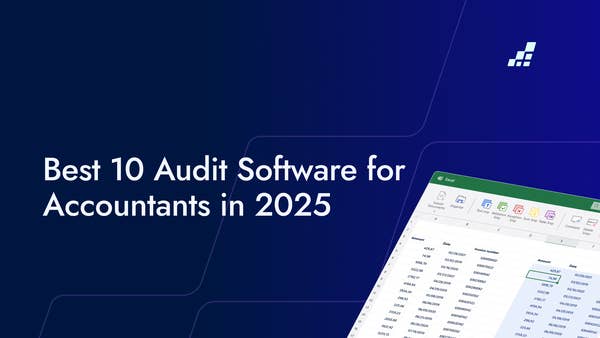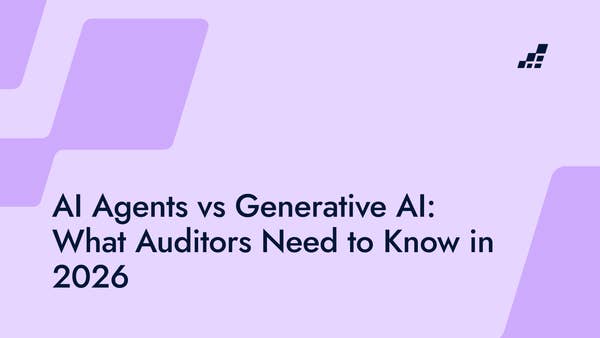- /
- Blog
Continuous Auditing 101: Key Advantages, Challenges, and the Role of Technology

Audit teams today face constantly evolving regulations, rising costs, and an explosion of data—all while striving to meet ever-increasing demands for precision and speed.
While continuous auditing (CA) has become a buzzword thrown around in boardrooms and tech blogs, it signifies a powerful shift in how audits are conducted. This approach aims to transform audits from periodic, manual reviews into fast, agile operations that can keep pace with modern demands.
In this article, we’ll break down what CA really means as well as its benefits and challenges. We’ll also explore how technologies like automation and artificial intelligence (AI) are powering this shift and setting the stage for the future of audits.
Traditional Auditing vs. Continuous Auditing
Before diving into continuous auditing, we need to acknowledge the limitations of traditional auditing methods, i.e., busy seasons and manual work.
Traditional audits happen at fixed intervals—typically quarterly or annually—and rely heavily on manual processes and sample-based testing. While the long-standing industry standard, this approach has its challenges:
- Gaps in oversight can result as new risks slip through the cracks and existing issues go unnoticed by the time an audit wraps up.
- The manual, labor-intensive processes involved in traditional audits are inefficient, slowing teams down and leaving the door wide open for costly human error.
- And then there’s burnout. Busy seasons, long hours, and repetitive manual tasks take a toll on audit teams—which may be why record numbers are leaving the profession.
This is where continuous auditing steps in. It’s an emerging approach that harnesses advanced technology to keep a constant eye on financial data and processes.
Unlike traditional audits, which happen at set intervals, continuous auditing works in real-time or near real-time, enabling teams to detect issues and ensure compliance on an ongoing basis. While CA isn’t poised to replace traditional audits just yet, it offers a promising path to enhance the efficiency and effectiveness of standard processes.
Continuous Auditing vs. Continuous Monitoring
At first glance, continuous auditing and continuous monitoring might seem like the same thing. Both rely on automated processes to give you ongoing insights into your organization’s performance, but they serve different purposes.
Continuous auditing focuses specifically on auditor-led analysis, allowing for more frequent and detailed financial reviews. Meanwhile, continuous monitoring takes a broader approach, keeping tabs on key performance indicators (KPIs), business processes, and regulatory compliance across all departments. This wider lens provides management—not just audit teams—with a real-time snapshot of organizational performance.
By tapping into different data and involving various departments, continuous auditing and monitoring complement each other. Together, they strengthen oversight and support better decision-making, leading to a more accountable and agile organization.
Advantages Of Continuous Auditing
Continuous auditing is all about staying ahead of the game, and here’s how it makes life easier for auditors:
- Sharper accuracy: By replacing manual processes with automation, teams can save time and reduce mistakes. Plus, real-time data insights allow auditors to be more proactive and identify risks immediately.
- All the data, all the time: Instead of relying on samples, CA dives into every transaction. And rather than periodic snapshots, auditors get a complete and near real-time view of operations, giving them unmatched coverage and peace of mind.
- Full-on transparency: With a complete view of financial operations, audit teams can deliver on transparency. This helps them meet ever-growing expectations from leadership around risk management and regulatory compliance without the usual stress.
- Productivity boost: CA spreads the workload throughout the year, easing the chaos of the year-end crunch. It makes the process smoother and frees up time for more important work, cutting down on burnout from repetitive, tedious tasks.
Potential Challenges Of Continuous Auditing
While CA offers exciting opportunities to enhance audit processes, it also comes with its own set of challenges that need to be navigated:
- Resource investment: Implementing CA solutions can require a significant initial investment and ongoing maintenance costs. Plus, dedicated resources and training might be necessary to fully leverage these tools. It’s important to evaluate the potential return on investment with a phased approach, starting with a pilot program to demonstrate value.
- Navigating the shift: Transitioning to CA can be daunting. Teams might face pushback from those comfortable with traditional practices and encounter challenges integrating new technologies and data systems. However, by embracing effective change management strategies—like involving stakeholders early on and rolling out pilot programs—teams can smooth the transition and cultivate a culture that's excited about change.
- Privacy measures: With continuous access to real-time data, protecting sensitive information is more crucial than ever. It's vital to establish a robust data protection framework that includes encryption, regular security assessments, and comprehensive training for employees on best practices for data privacy. This proactive approach ensures that as you embrace the future of auditing, you’re also safeguarding the trust of your stakeholders.
The Role Of Technology In Achieving Continuous Auditing
The future of continuous auditing is being shaped by cutting-edge technologies that enhance efficiency, accuracy, and real-time responsiveness.
Robotic Process Automation (RPA) is one form of automation, empowering auditors to streamline routine tasks using software that follows simple "if-then" rules. Complementing RPA are intelligent automation tools like DataSnipper, which harness AI to enable auditors to interpret and analyze vast volumes of data with unprecedented speed and accuracy.
The journey toward continuous auditing is further supported by a range of advanced technologies, including:
- Cloud-based platforms to increase the accessibility and scalability of data, enabling auditors to access and analyze information from anywhere, at any time.
- Modeling and machine learning algorithms that improve the detection of unusual patterns, such as fraud or control variations, while better assessing overall risk.
- Blockchain technology to create secure and transparent ledgers of transactions, improving the integrity of CA processes.
While the full implementation of continuous auditing remains on the horizon, innovative solutions are laying the groundwork for a more agile, data-driven future in auditing. As these technologies continue to evolve and integrate, the vision of smarter, faster, and more proactive auditing is rapidly becoming a tangible reality. The age of truly continuous auditing is not just approaching—it's unfolding before our eyes.
Curious to learn more about how AI and automation are advancing the audit landscape? Download our ebook, The Future of Audit is Intelligent Automation.
FAQ
What is continuous control auditing (CCA)?
In auditing, "controls" are the policies, procedures, and activities that organizations put in place to ensure they meet their goals and manage risks effectively. CCA evaluates how well those internal controls are working on an ongoing basis. It’s a key part of continuous auditing, zeroing in on whether the systems meant to keep things running smoothly are actually doing their job.
Can ANY firm continuously audit or is it exclusively for large enterprises?
Good news—continuous auditing isn’t just for the big guys. While bigger companies may have more resources to implement full-scale CA, the approach isn’t exclusive to them. Firms of all sizes can benefit from CA by starting small, focusing on critical areas first, and gradually expanding as their capabilities grow. The key is to scale the system to fit your organization’s needs and evolve it over time.
.png)

.png?width=600&quality=70&format=auto&crop=16%3A9)
